In Images: Hawaii's Mount Kilauea Erupts

Crater Collapse

Over the past several days, Hawaii's Mount Kilauea has been stunningly active.
The action began at the Halema`uma`u crater, where parts of the wall began to collapse into the lava lake below. Here, a large chunk of the rim collapsed into the Halema`uma`u lava lake on March 4.
Crater Collapse
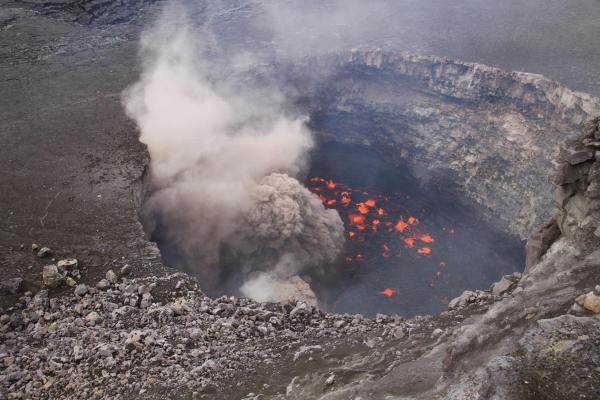
Just moments after the collapse, a thick brown plume was seen rising from the crater.
Crater Collapse

The next day, the Pu`u `O `o crater got into the action. Incandescent rubble is seen rolling and sliding down on the edge of the collapsing crater on March 5. A remnant of the pre-collapse crater floor can be seen in the background below the crater's south wall. The east rim of Pu`u `O `o is in the foreground.
Crater Collapse
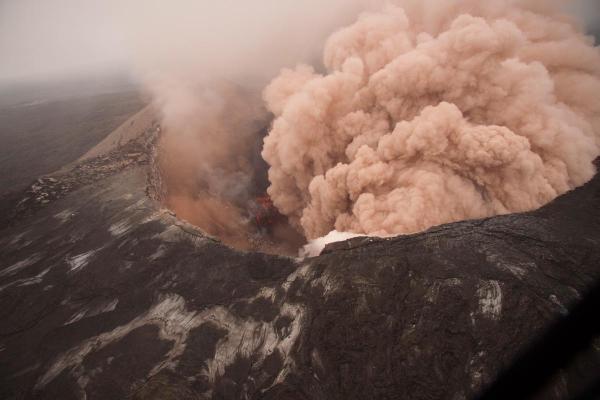
An ash cloud is seen rising from Pu`u `O `o as the crater floor collapsed due to magma withdrawal. Incandescent rubble can be seen crumbling.
Fissure Vent
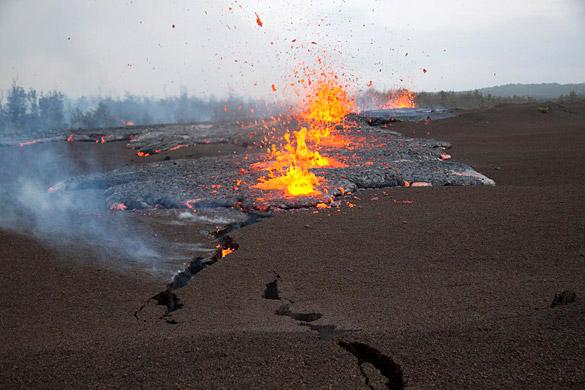
After the crater collapsed, a fissure vent opened nearby. A fissure is a split in a volcano that opens in a straight line.
Above, the view looking at the northeast end of the actively spreading fissure between Pu`u `O `o and Napau craters on March 5. Lava is just breaking the surface in the foreground crack.
Fissure Vent
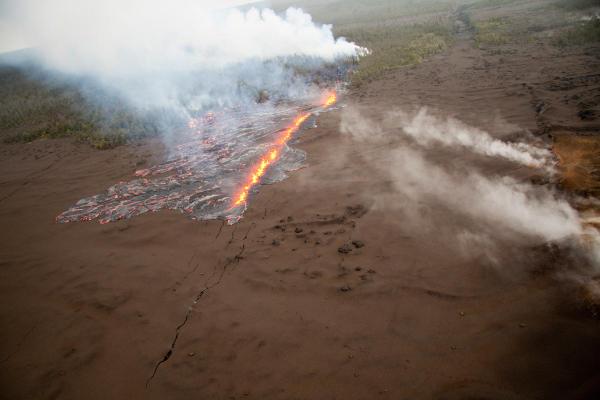
View toward the southwest of the fissure eruption. The fissure segment in the forest had shut down by this time on March 5.
Fissure Vent
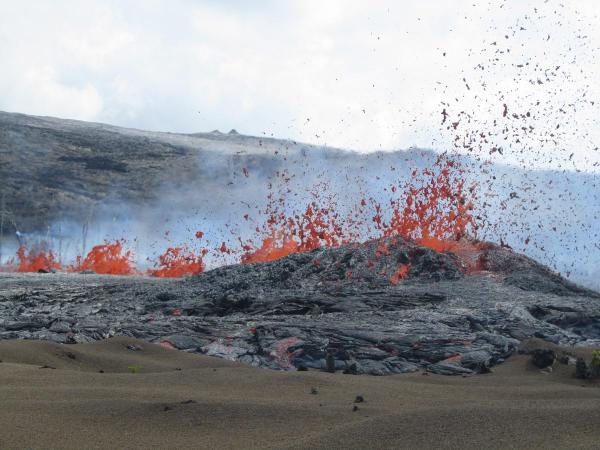
A close-up view of the fissure just west of Pu`u `O `o crater. Lava spatter was reaching heights of 130 feet (40 meters) tall on March 6.
Get the world’s most fascinating discoveries delivered straight to your inbox.
Fissure Vent

The eruptions ramped-up on a new fissure between the Pu`u `O `o Crater and Napau Crater.
Fissure Vent
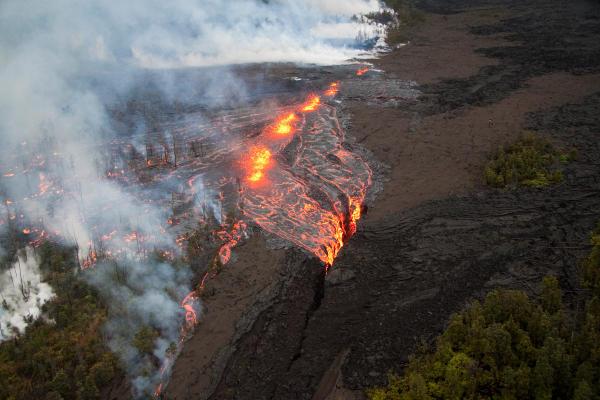
Lava pours from the fissure just after daybreak and cascades out of sight into a deep crack. A geologist from the Hawaiian Volcano Observatory gets an up-close look in the near upper right of the image.
Fissure Vent

Lava spatters above the fissure just west of the base of the Pu`u `O `o crater.
Fissure Vent
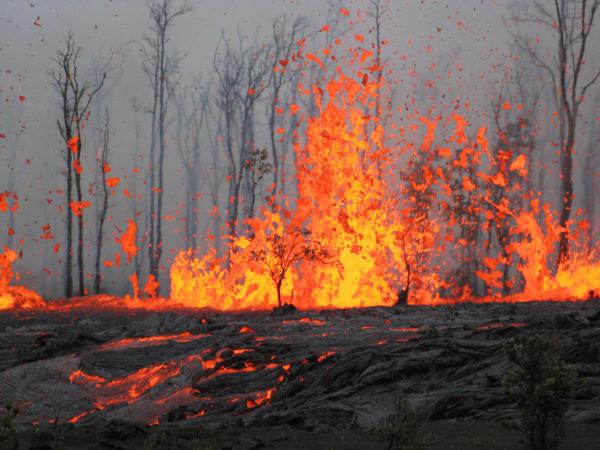
This fissure began in the early hours of March 6, erupting spatter and producing lava flows.



